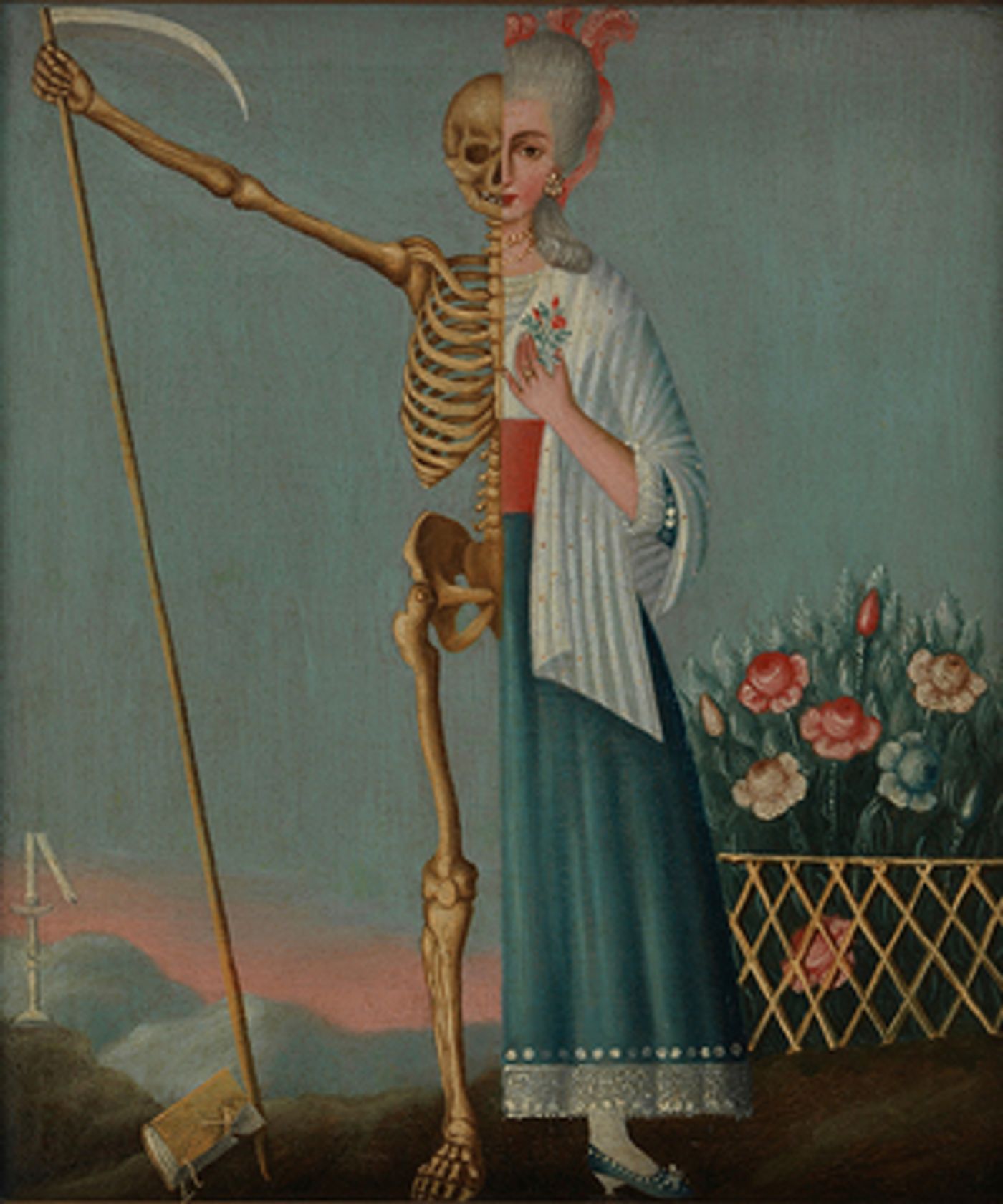DEATH IS NOT THE END Opens March 17 At The Rubin Museum
Exhibition explores death and the afterlife in the art of Tibetan Buddhism and Christianity.

The Rubin Museum of Art presents "Death Is Not the End," a new exhibition opening March 17 that explores notions of death and the afterlife through the art of Tibetan Buddhism and Christianity.
Featuring prints, oil paintings, bone ornaments, thangka paintings, sculptures, illuminated manuscripts, and ritual objects, "Death Is Not the End" invites contemplation on the universal human condition of impermanence and the desire to continue to exist.
This cross-cultural exhibition brings together 58 objects spanning 12 centuries from the Rubin Museum's collection alongside artworks on loan from private collections and major institutions including the Metropolitan Museum of Art; Morgan Library & Museum; Museum aan de Stroom, Antwerp; Wellcome Collection, London; Nelson Atkins Museum, Kansas City; San Antonio Museum of Art, Texas; Museum of Fine Arts, Boston; Philadelphia Museum of Art; and more. The exhibition is part of the Rubin Museum's yearlong thematic focus on Life After, exploring moments of change that propel us into the unknown. "Death Is Not the End" will be on view March 17, 2023, to January 14, 2024.
Buddhist and Christian cultures share the certainty of our mortality in this world while also proposing an existence after this lifetime. Depending on the circumstances, there is a promise of a better place, or one of further purifying suffering to ensure the eventual attainment of a better existence. These views, in their most general sense, refute the permanence of death while accepting its inevitability. "Death Is Not the End" considers the ideas that balance this apparent contradiction.
The exhibition will be organized around three major themes: The Human Condition, or the shared understanding of our mortality in this world; States In-Between, or the concepts of limbo, purgatory, and bardo; and (After)life, focusing on resurrection, ideas of transformation, and heaven.
"During a time of great global uncertainty, loss, and turmoil, many question and ponder the various ideas related to the afterlife," says Senior Curator of Himalayan Art Elena Pakhoutova. "In pairing artworks from Christianity-the most familiar cultural framework in the United States-with those from Buddhism, a less known visual culture in the West, we highlight a universal common ground and encourage visitors' inquiry as they engage with these diverse objects. I hope that this exhibition inspires conversations around the sometimes challenging or uncomfortable topic of what comes after life, as well as respect for different perspectives and approaches."
Notable artworks on view from the Rubin Museum's collection will include The Wheel of Life painting (Tibet; 19th century), which illustrates the larger context of human existence, the fundamental causes of suffering, and the inevitability of death and rebirth; the Yama Dharmaraja painting (Tibet; 18th century) of a wrathful deity associated with Vajrabhairava, conqueror of death; the painted terracotta sculpture of dancing skeletons known as Lords of the Charnel Ground, Smashana Adipati (Tibet; 18th century), who protect tantric yogis striving to be free from attachment; Bone Ornaments (Tibet, 18th-19th century), an apron practitioners would wear to overcome attachment to self and their body; Avalokiteshvara and His Pure Realm (Tibet, late 18th-early 19th century), a painting of the realm where beings aspire to be reborn, to be in the presence of the deity free from suffering; and more.
Works on loan will include the painting A Woman Divided into Two Representing Life and Death (ca. 18th century; Wellcome Collection), an allegorical depiction of the human condition, which is less overtly religious and intended to provoke intellectual and moralistic reflection on mortality; The Last Judgment by a follower of Hieronymus Bosch (late 16th century; Philadelphia Museum of Art), in which the horrors of hell so vividly portrayed are thought to provide an encouragement to renounce immoral living in anticipation of the Last Judgement and salvation; Pieter van der Heyden's engraving of The Descent of Christ into Limbo, after Pieter Bruegel the Elder (Netherlands; ca. 1561), which shows Christ appearing in a sphere of radiance, guiding souls that are crowding out of the hellish mouth of limbo and led to heaven; a Buddhist album leaf painting illustrating Beings Liberated from Hell by the Blessings of the Buddha (Inner Mongolia; 18th-19th century; Museum aan de Stroom, Antwerp), which depicts another instance of "divine intervention" by Buddha Vairochana; and more.
"Death Is Not the End" is curated by Elena Pakhoutova, Senior Curator of Himalayan Art at the Rubin Museum.
Videos

